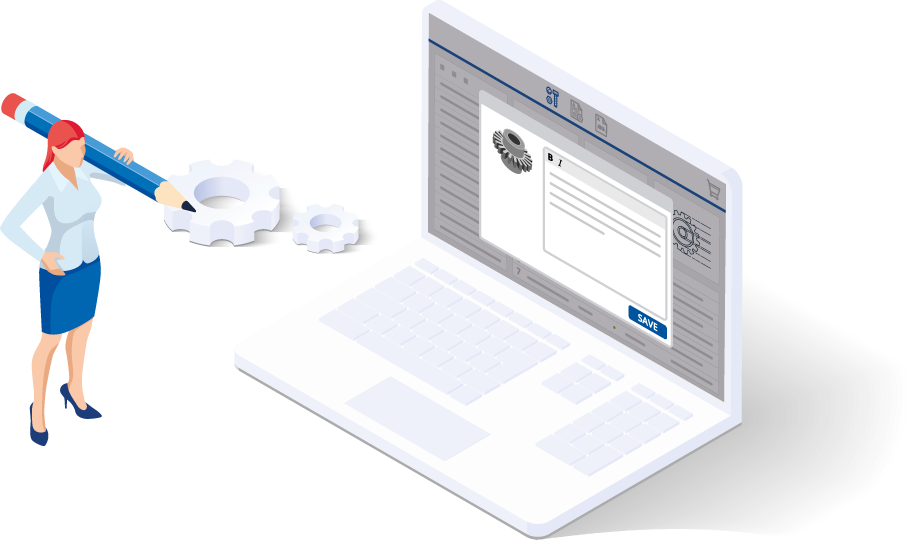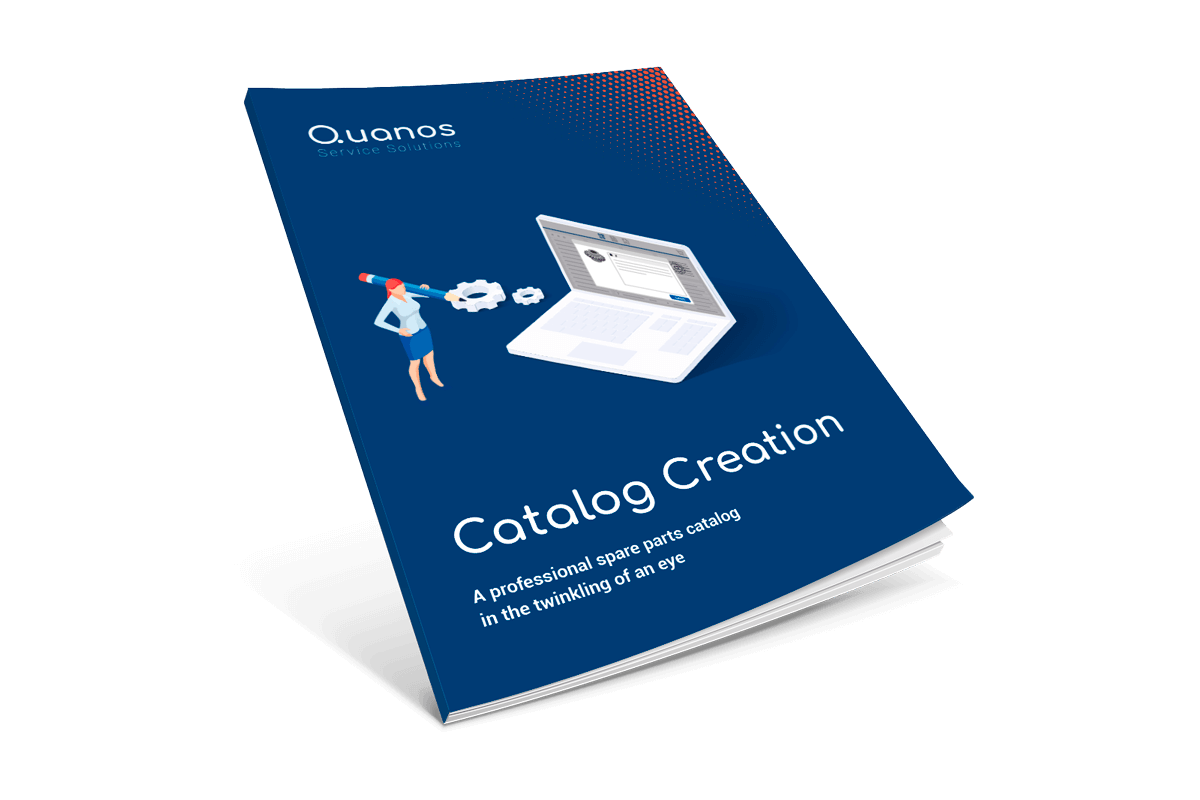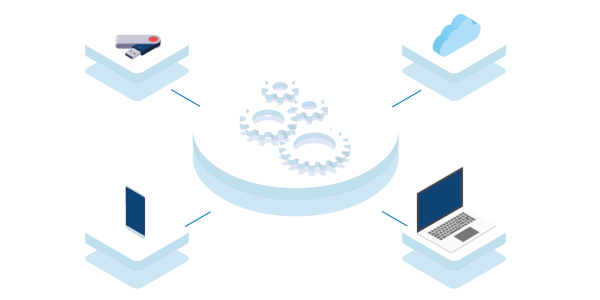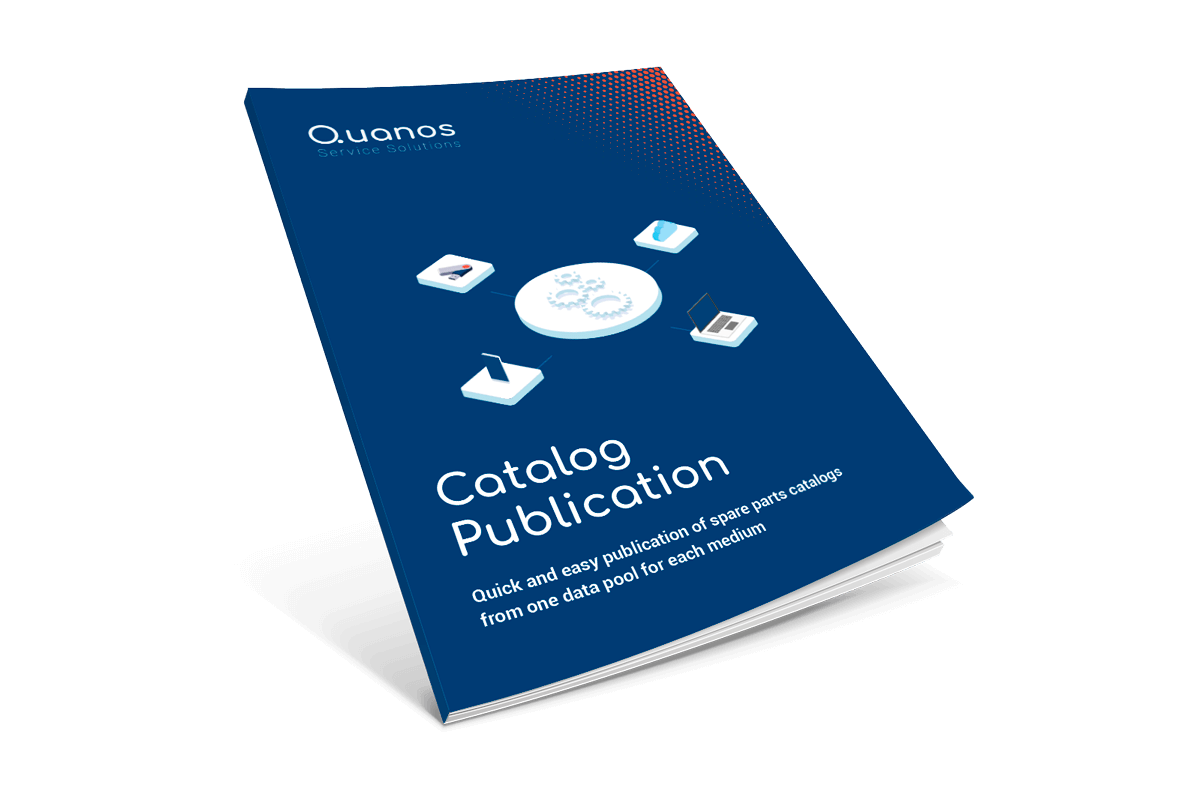Nobody who has to create a catalog in the machinery and plant construction sector has it easy. Technical writing is not regarded as a profit center, but rather as a department that drains the coffers instead. The catalog creators themselves are under enormous time pressure, just one of the many challenges they face.
Catalogs that are created and published under these conditions also tend to make life more difficult for customers and service technicians:
- If a catalog does not reflect the “As-maintained” or “As-built” status, but only the “As-designed” status, and does not contain the parts actually installed in the respective machine, customers may, in the worst case, have to put up with increased downtimes and high costs.
- To comply with applicable standards and guidelines, machines must be supplied with technical documents such as operating instructions and a parts catalog. Since no standards are set for the catalog, it is often added as a PDF to the end of the documentation. This makes it difficult to identify the spare parts that are required.
- When catalogs are produced in analog form and published as a PDF or in paper format, operators do not have access to up-to-date parts information everywhere and at any time.
The key to success
Service business – and the sale of spare parts in particular – has become an important sales drivers for manufacturers. An up-to-date spare parts catalog – including “As-built” and “As-maintained” information plus material numbers for each spare part – is essential to allow customers and technicians to find and order the parts they need.
If the Technical Writing department is able to network monetizable information intelligently as well as optimize the creation and publication of catalogs, this will help to significantly increase sales in plant engineering and construction.

„Overall, the spare parts platform has 50,000 digital spare parts catalogs, and data for two million parts. Even so, with Quanos we still achieve a response time of just 70 to 90 milliseconds - which is less time than it takes to blink.“
Mercedes-Benz AG Manuel Hauser, Lead Business Architect for spare parts information at Mercedes-Benz
Efficient results and flexible publishing with digitalized catalog creation
Sentence inconvenient analog processes to the past where they belong. A spare parts catalog system allows you to create catalogs in a fraction of the time and publish them seamlessly on different channels.
Efficient data management helps to solve the challenges facing technical writers and catalog creators. It creates a continuous flow of data, from the collection of information for catalogs and their creation to media-independent publication and beyond.
Machine and plant manufacturers respond to these challenges by using software for interactive spare parts catalogs. Catalog software interconnects with the existing systems in a company, which drastically reduces sources of error as well as the effort required to generate spare parts documentation.

Easier catalog creation
Existing company data does not have to be painstakingly collected, but flows into the spare parts documentation automatically or via manual import. Adjustments to layout or content are possible at any time and without programming knowledge.
Even 3D data can be used, making spare parts catalogs even more intuitive.
Are you keen to create, publish, translate, and update your spare parts catalogs with minimal outlay and effort? Quanos SIS.one allows you to accomplish all this and more in a single software application.
Facts about the Quanos SIS.one digital catalog system:
- The software simplifies the (partially) automated or manual creation and publication of spare parts catalogs, and also reduces the workload of the catalog creator.
- The platform consolidates, integrates, and links together relevant data for spare parts documentation from different departments and systems.
- Technical writers are highly capable of conveying complex matters in a simple way – the user-friendly interface assists them and makes service-relevant data clearly available around the clock to colleagues, technicians, and customers.
The Technical Writing department is more than just a collection point for data. Quanos SIS.one leverages the potential for efficiency that lies dormant there and enables faster processes at low costs, keeping technical writers, manufacturers, technicians, and operators happy.
Create catalogs in no time
Use Quanos SIS.one to create machine, customer, and user-specific catalogs in every language. Integrated tools for the automated or manual preparation and optimization of data will assist you with this.
The data comes from ERP, CCMS, DMS, PIM, CAD, CAE, or logistics systems and is linked bidirectionally in Quanos SIS.one – data silos are a thing of the past. Mechanisms such as encryption or defamiliarization of 3D visualizations protect your intellectual property against unauthorized access.
Quality assurance also ensures that only high-quality catalogs are published, and the WYSIWYG editor (What You See Is What You Get) allows you to create catalog layouts in your corporate design.
Publication made easy
A fully automated publication process in Quanos SIS.one allows single-source publishing – use all data from a single source for all media. Publish catalogs online, offline or, depending on the application, as a print version. Automated, semi-automated, or manual updates ensure that your catalogs are always up to date.
Even after publication, Quanos SIS.one gives you full control and data sovereignty over your catalogs. The on-premise solution ensures availability and access to your catalog at all times.
Advantages of digitally created and published catalogs
Ready for more digitalization with Quanos SIS.one
Quanos SIS.one increases your efficiency and sales. It also forms the basis for digitalizing your aftersales and service. Add further content such as technical documentation, circuit diagrams, hydraulic diagrams, videos, or images to turn your interactive spare parts catalog into a comprehensive service information system. It intelligently links content with spare parts information and creates an important source of data for users. The Technical Writing department makes a valuable contribution to this.
See for yourself
Creating and publishing spare parts catalogs is so simple
What used to take you weeks will now take just minutes with Quanos SIS.one. Create and publish spare parts catalogs efficiently, and save paper, time, and costs.
Would you like to know what a finished digital spare parts catalog made with Quanos SIS.one looks like? Get to know the software now without obligation.













